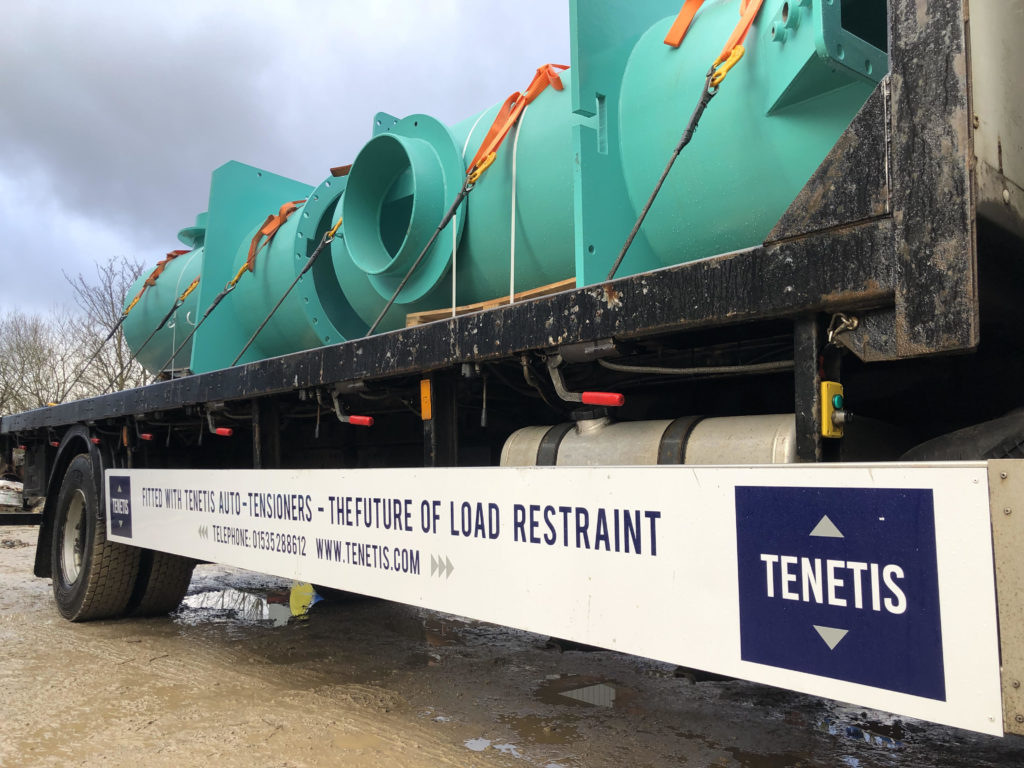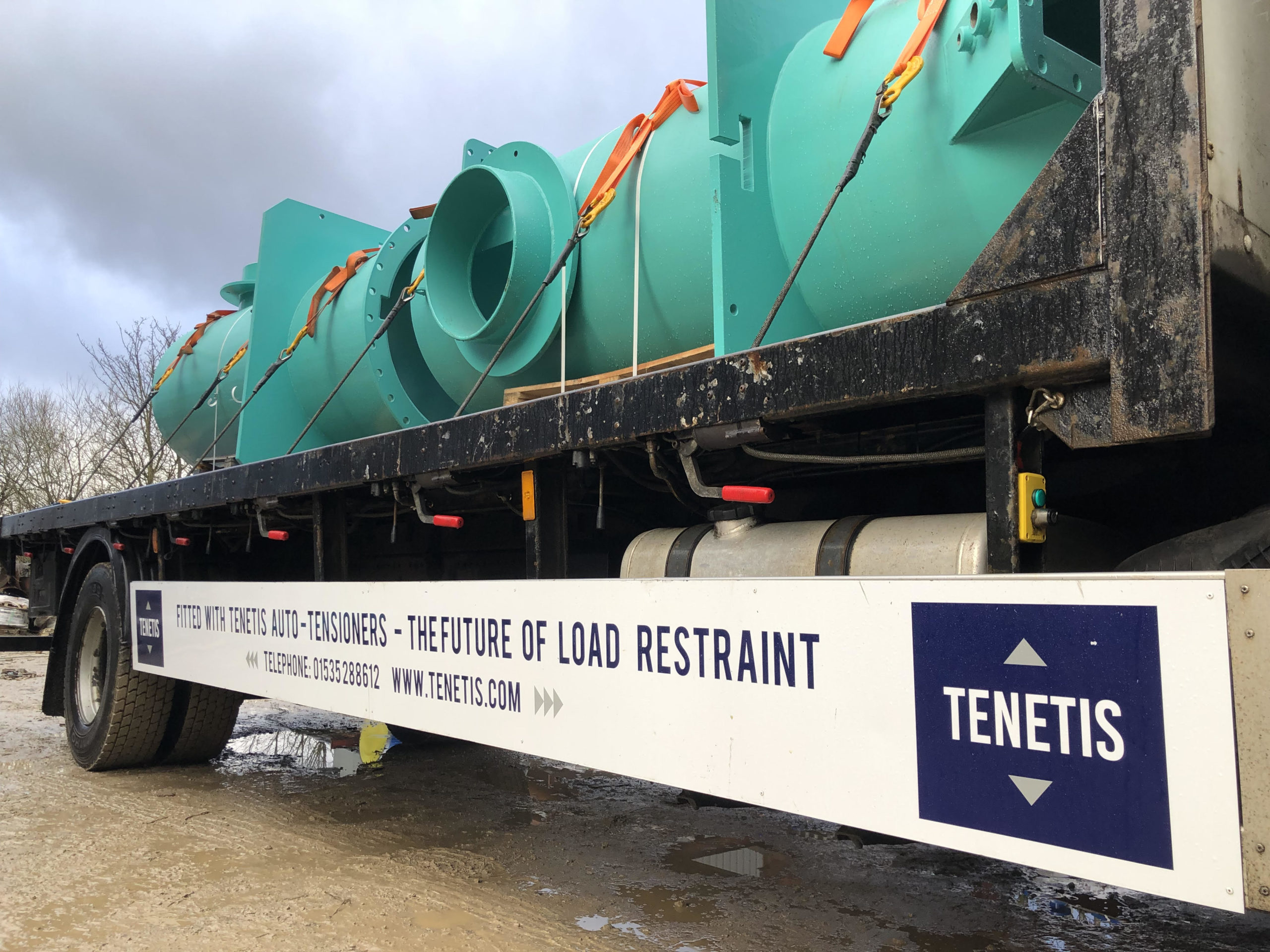TENETIS AUTOMATED LOAD RESTRAINT
March 20, 2023
IN ACTION AT THE SHARP END…
Neil Hargreaves is a bit different to most drivers. Much of his career has been spent managing a team of specialized electricians. 4 years ago he exchanged that for a life on the road.
‘’No two days are the same, we make large steel structures including huge pipework systems for the water industry, I deliver across the UK often to sites under development which believe me, isn’t without its challenges’’ he muses.
Problem solving has been an occupational necessity for Neil. ‘’The methods of securing a load seemed… well a bit crude to me when I first came into transport. I bet most drivers would agree ratchet straps can be temperamental, particularly when they are worn or get choked up with grime. Frayed strap ends make threading difficult and you can only get them so tight. The release mechanism can be quite aggressive and locking the ratchet can be problematic depending on the circumstances. All this adds up to it taking longer than it should’’
Operations Director and ‘O’ license holder Andrew Curtis recalls the day Neil came to talk to him about load restraint. ‘’It s rare when you get someone coming into the industry with fresh eyes, Neil made his observations on what he’d seen and it occurred to me he had a very good point. Trucking has evolved in so many ways particularly in relation to vehicle performance and yet load restraint is as vital as the braking system on a truck but it seems to have been passed by – incredible considering the increased scrutiny operators are seeing from the enforcement agencies’’
Andrew concluded something should be done to improve things. ‘’Tenetis were receptive to our challenge, and set about bringing a novel, ground breaking design to life’’
Neil has been running with the Tenetis load restraint system on his truck for 3 months now. ‘’Its outstanding. Its quick and simple to use, it saves me 10 to 15 minutes every load. Once the main lashing is in place I just hook on and pull the lever and that’s it – it has to be the way forward from a safety point of view, I know I’ve got the right lashing force every time’’
Andrew summarises ‘’the system delivers 350kg lashing force no matter what kind of a day the drivers had – I can’t imagine any operator or driver wanting to go back to ratchets after this. The drivers happy and so are we in the knowledge the load is safe.

How does it work?
At the heart of the system lies the Auto Tensioner itself, this device incorporates a rotating spool through which a short length of hi tensile rope is passed which terminates in a hook. The driver simply passes the hook through a shackle on a conventional web lashing and applies the lashing force using the Auto Tensioners own hydraulic lever. A double locking system ensures a consistent lashing force of 350kgs is applied and sustained throughout the transportation process.
The Auto Tensioners are placed at appropriate intervals along the length of the vehicle body and are connected by a hydraulic ring main complete with its own powerpack.

